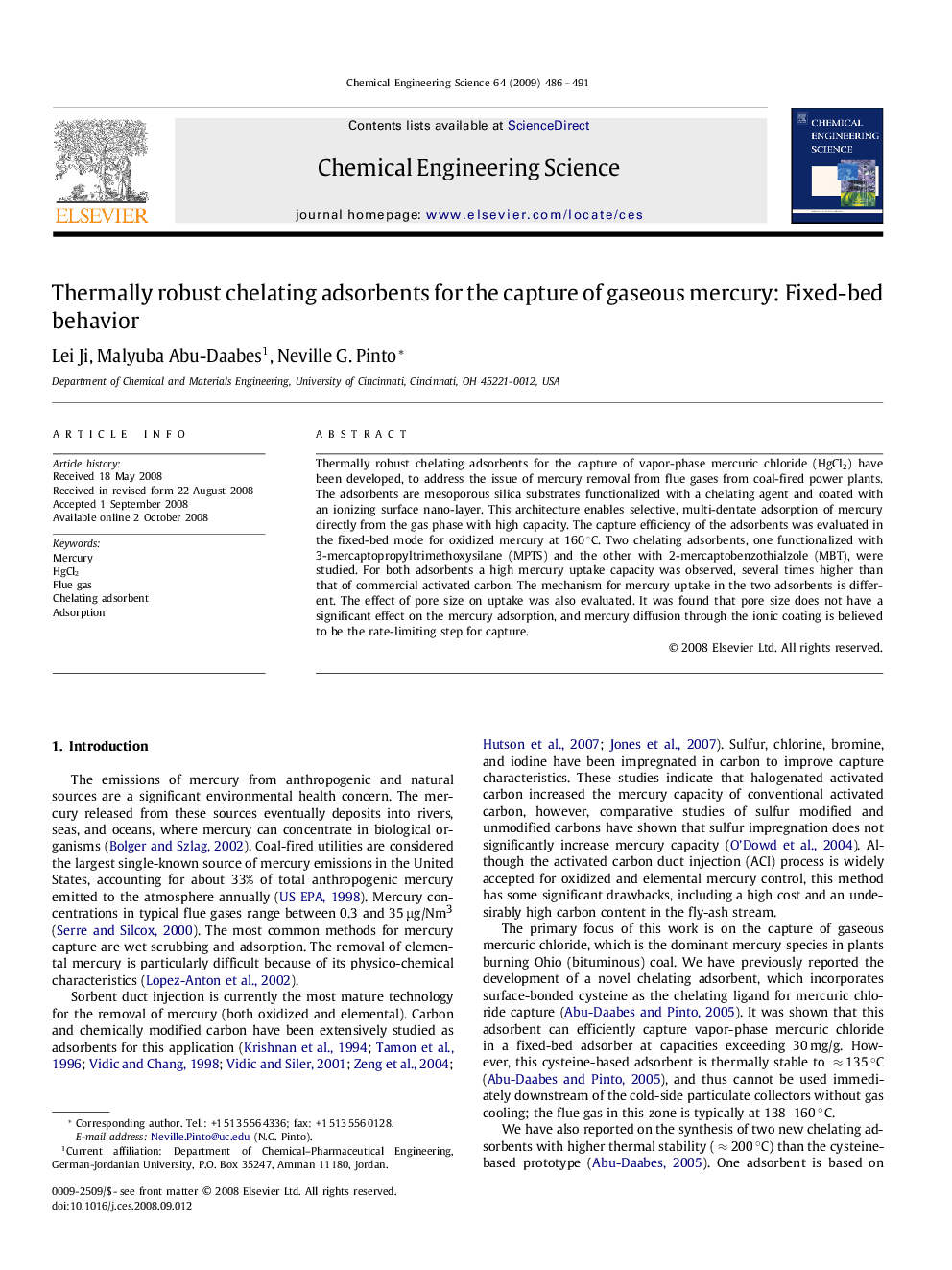| Article ID | Journal | Published Year | Pages | File Type |
|---|---|---|---|---|
| 157229 | Chemical Engineering Science | 2009 | 6 Pages |
Thermally robust chelating adsorbents for the capture of vapor-phase mercuric chloride (HgCl2) have been developed, to address the issue of mercury removal from flue gases from coal-fired power plants. The adsorbents are mesoporous silica substrates functionalized with a chelating agent and coated with an ionizing surface nano-layer. This architecture enables selective, multi-dentate adsorption of mercury directly from the gas phase with high capacity. The capture efficiency of the adsorbents was evaluated in the fixed-bed mode for oxidized mercury at 160 °C. Two chelating adsorbents, one functionalized with 3-mercaptopropyltrimethoxysilane (MPTS) and the other with 2-mercaptobenzothialzole (MBT), were studied. For both adsorbents a high mercury uptake capacity was observed, several times higher than that of commercial activated carbon. The mechanism for mercury uptake in the two adsorbents is different. The effect of pore size on uptake was also evaluated. It was found that pore size does not have a significant effect on the mercury adsorption, and mercury diffusion through the ionic coating is believed to be the rate-limiting step for capture.
